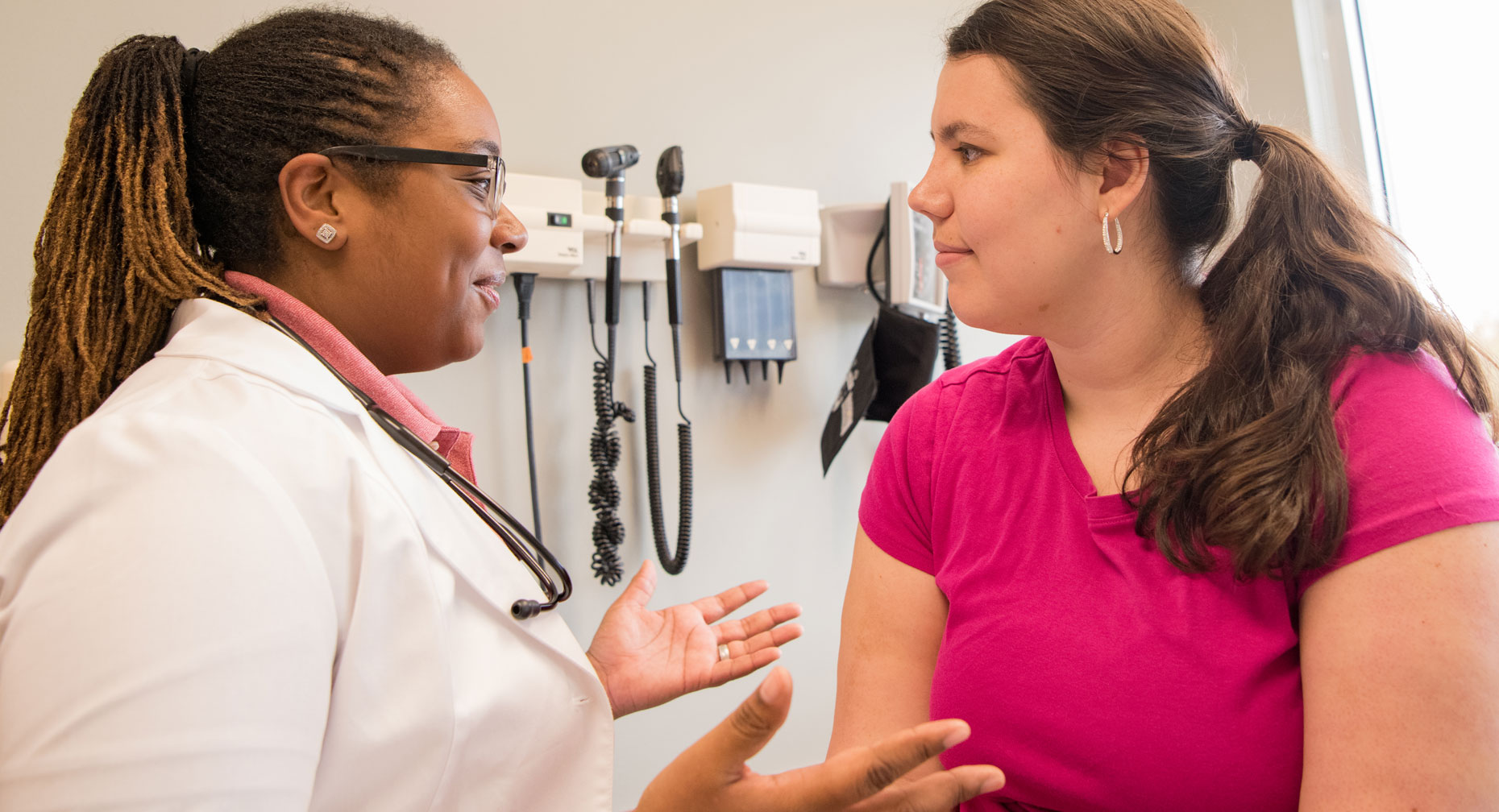Thyroid Cancer’s Sneaky Approach

Find Your Perfect Match
Answer a few questions and we'll provide you with a list of primary care providers that best fit your needs.
Thyroid cancer can be tricky to diagnose because the symptoms are subtle. The good news is that most thyroid cancers are very curable.
A small lump on your thyroid is often the first sign. But because the lump typically isn’t bothersome, you may not even notice it.
That’s why you should make sure your doctor examines your neck at every visit.
If a lump is found, your doctor will likely want to insert a needle into the lump to draw some fluid for testing. An alternative is to surgically remove the lump for testing. This is how the cancer is officially confirmed. Fewer than one in 10 thyroid lumps (called nodules) are cancer.
What are the Types of Thyroid Cancer
- Papillary thyroid cancer is the most common (about 80 percent of people have this type). It affects all age groups, grows slowly, and often spreads to the lymph nodes. The prognosis is excellent and the cure rate is high, even if the cancer is in the lymph nodes.
- Follicular thyroid cancer makes up about 10 to 15 percent of thyroid cancers. This type is less likely to spread to the lymph nodes, but more likely to spread to the lungs, bones and other organs than papillary thyroid cancer. The cure rate is excellent, especially in young patients, but decreases somewhat in older adults.
- Medullary thyroid cancer accounts for about 2 percent of all thyroid cancers. A quarter of people with this cancer have family members who also had thyroid or other endocrine tumors. Testing for this cancer in family members can result in an early diagnosis and a cure if caught in time. Survival rates are very good if the cancer hasn’t spread beyond the lymph nodes.
- Anaplastic thyroid cancer is advanced, aggressive and the least likely to respond to treatment. It often returns following treatment, and survival rates are very low. Only 1 to 2 percent of all thyroid cancers are anaplastic. It mostly affects adults age 65 or older.
Fewer than one in 10 thyroid lumps (called nodules) are cancer.
How is Thyroid Cancer Treated?

Surgery is the primary treatment for thyroid cancer. Depending on the size and location of the lump, your surgeon will do one of the following:
- Remove the side of the thyroid with the lump
- Remove the entire thyroid
- Remove the entire thyroid and surrounding lymph nodes if he can see that cancer has spread into the nodes
The extent of your surgery may not be decided until the procedure is underway; your surgeon will decide what to remove based on what he sees. After the surgery, it’s common to need daily thyroid hormone replacement for the rest of your life to replace the thyroid homes you can no longer produce.
Radioactive iodine therapy is another treatment sometimes used for thyroid cancer. It involves swallowing a small amount of radioactive iodine, which will kill any of your thyroid tissue that wasn’t removed during surgery. It also destroys any remaining thyroid cancer cells. Since other tissue in your body doesn’t absorb radioactive iodine like thyroid tissue does, this treatment effectively destroys the thyroid and thyroid cancer without disturbing other tissue.
If you have advanced cancer, or cannot have surgery, you may be treated with external radiation. This radiation is directed at your cancer nodules from a source outside your body. Although commonly used with other cancers, chemotherapy for thyroid cancer is only used for patients with anaplastic thyroid cancer.
Find Your Perfect Match
Answer a few questions and we'll provide you with a list of primary care providers that best fit your needs.
Source: Hormone Health Network; American Thyroid Association; American Cancer Society

